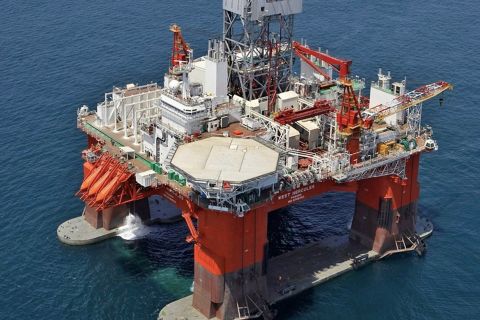U.S. oil producer Occidental Petroleum Corp. on Nov. 9 increased by about 22% the estimated investment for the world’s first large scale direct air capture (DAC) project to capture carbon emissions and disclosed plans to build others.
The Houston-based company expects to spend now $1.1 billion in the project under construction in Ector County, Texas, from $800 million-$1 billion before.
“Inflationary pressures felt across the economy, especially for construction materials and labor” explain the added costs, CEO Vicki Hollub told analysts in a webcast to discuss the company’s third-quarter results.
Occidental is aiming to build a profitable business by pulling CO₂ out of the air and burying it underground. It bets the world will need oil for decades to come and that government and business climate goals will only be achieved if emissions are not only reduced, but also actively removed from the air.
But the technology will be a cash drain for investors until it gains commerciality—and the time estimate for it is unclear. Occidental’s first large-scale project started construction in September, when it had its start-up delayed by a few months to late 2024.
RELATED:
Vicki Hollub Says Occidental Will Nearly Double Carbon Capture Projects
Despite the hurdles, the company on Nov. 9 expanded future plans for DAC. Government incentives and the passage of the Inflation Reduction Act into law allow it to plan 100 DAC facilities by 2035, from 70 before, Hollub said. Land for half of them has been secured.
“It’s not as well recognized yet. But when the world realizes how much the transition will cost, I do believe that this will become the preferred option to ensure that we can continue the production of low-carbon fuel for those that need it,” Hollub said.
Occidental’s first DAC plant progress is closely watched by the oil industry for its scale. It has a goal of removing up to 1 million tonnes of CO₂ from the atmosphere per year—100 times more than all 18 DAC plants currently operating worldwide combined, according to the International Energy Agency.
In October, it started planning and engineering for DAC facilities at a second Texas site, in Kleberg County, with a combined capacity to remove 30 million tonnes of CO₂ annually.
Shares fell as much as 9% following the call to discuss its quarterly results, which slightly missed Wall Street estimates. Shares of energy firms were down across the industry.
Occidental’s shares have more than doubled this year. It attracted the interest of Warren Buffett’s Berkshire Hathaway Inc., now Occidental’s largest shareholder, with a 20.9% stake.
The company has been using the cash from high oil prices to pay down debt and plans to reduce it to $18 billion until the end of the year, exceeding its previous target by $2 billion.
Starting next year, the company will “have significantly more capital available” which Hollub said “will be allocated mostly” to shares buybacks.
Recommended Reading
US Raises Crude Production Growth Forecast for 2024
2024-03-12 - U.S. crude oil production will rise by 260,000 bbl/d to 13.19 MMbbl/d this year, the EIA said in its Short-Term Energy Outlook.
Iraq to Seek Bids for Oil, Gas Contracts April 27
2024-04-18 - Iraq will auction 30 new oil and gas projects in two licensing rounds distributed across the country.
US Drillers Add Oil, Gas Rigs for Second Week in a Row
2024-01-26 - The oil and gas rig count, an early indicator of future output, rose by one to 621 in the week to Jan. 26.
Second Light Oil Discovery in Mopane-1X Well
2024-01-26 - Galp Energia's Avo-2 target in the Mopane-1X well offshore Namibia delivers second significant column of light oil.
E&P Highlights: Jan. 29, 2024
2024-01-29 - Here’s a roundup of the latest E&P headlines, including activity at the Ichthys Field offshore Australia and new contract awards.


